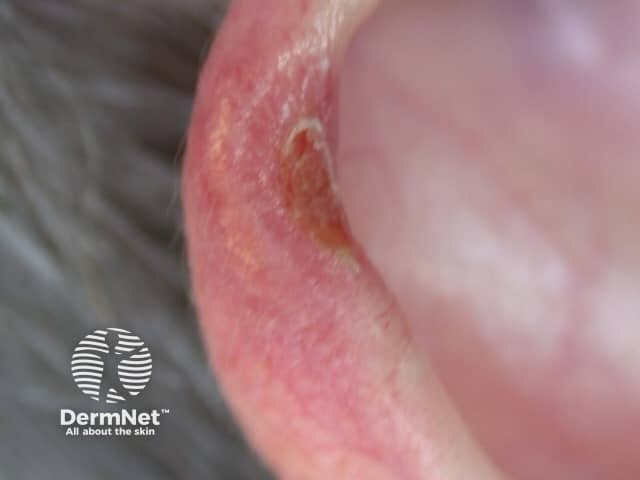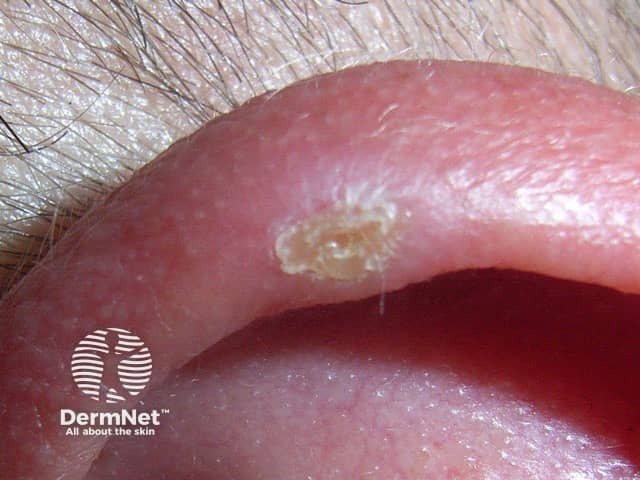Main menu
Common skin conditions

NEWS
Join DermNet PRO
Read more
Quick links
Author: Dr Anita Eshraghi, Dermatologist, Sweden. DermNet Editor-in-Chief Adjunct A/Prof Amanda Oakley, Dermatologist, Hamilton, New Zealand. Original page by Dr Oakley was published in 1997. Updated August 2018.
Introduction
Demographics
Causes
Clinical features
Diagnosis
Differential diagnoses
Treatment
Outcome
Chondrodermatitis nodularis is a common inflammatory condition which affects the skin and cartilage of the helix or antihelix of the ear.
Chondrodermatitis nodularis is sometimes called Winkler disease, after the dermatologist who described it in 1915. It is also called nodular chondrodermatitis, chondrodermatitis nodularis helicis, and chondrodermatitis nodularis chronica helicis.
Chondrodermatitis nodularis occurs more frequently in fair-skinned and middle-aged older males, with 10–35% of the cases reported in women. It is rarely reported in children.
The exact cause of chondrodermatitis nodularis is still unknown. There are several factors that contribute to its development.

Chondrodermatitis

Chondrodermatitis

Image provided by Dr Trevor Evans
Chondrodermatitis nodularis is a solitary, firm, and oval-shaped nodule, 4–6 mm in diameter, with central crust and surrounding erythema.
In most cases, the diagnosis of chondrodermatitis nodularis is made clinically, based on the characteristic location on the helix or antihelix, and a typical history of pain and tenderness.
Sometimes an excision biopsy may be necessary to confirm the diagnosis (see Chondrodermatis nodularis pathology).
The differential diagnosis for CNH depends on the clinical findings. Other diagnoses to consider include:
Protective padding at night can relieve pressure on the area affected by CNH.
A steroid injection of triamcinolone acetonide may reduce local inflammation.
A filler such as collagen or hyaluronic acid can be injected under the skin above the cartilage to provide a cushioning layer.
Nitroglycerin ointment (containing 1–2% glyceryl trinitrate) causes relaxation and vasodilation of the arteriolar smooth muscle and can reverse the ischaemic changes seen in chondrodermatitis nodularis.
Surgical options may include:
Unfortunately, CNH has a 10–30% recurrence rate after surgery.
CNH usually resolves within a few months. It can recur.